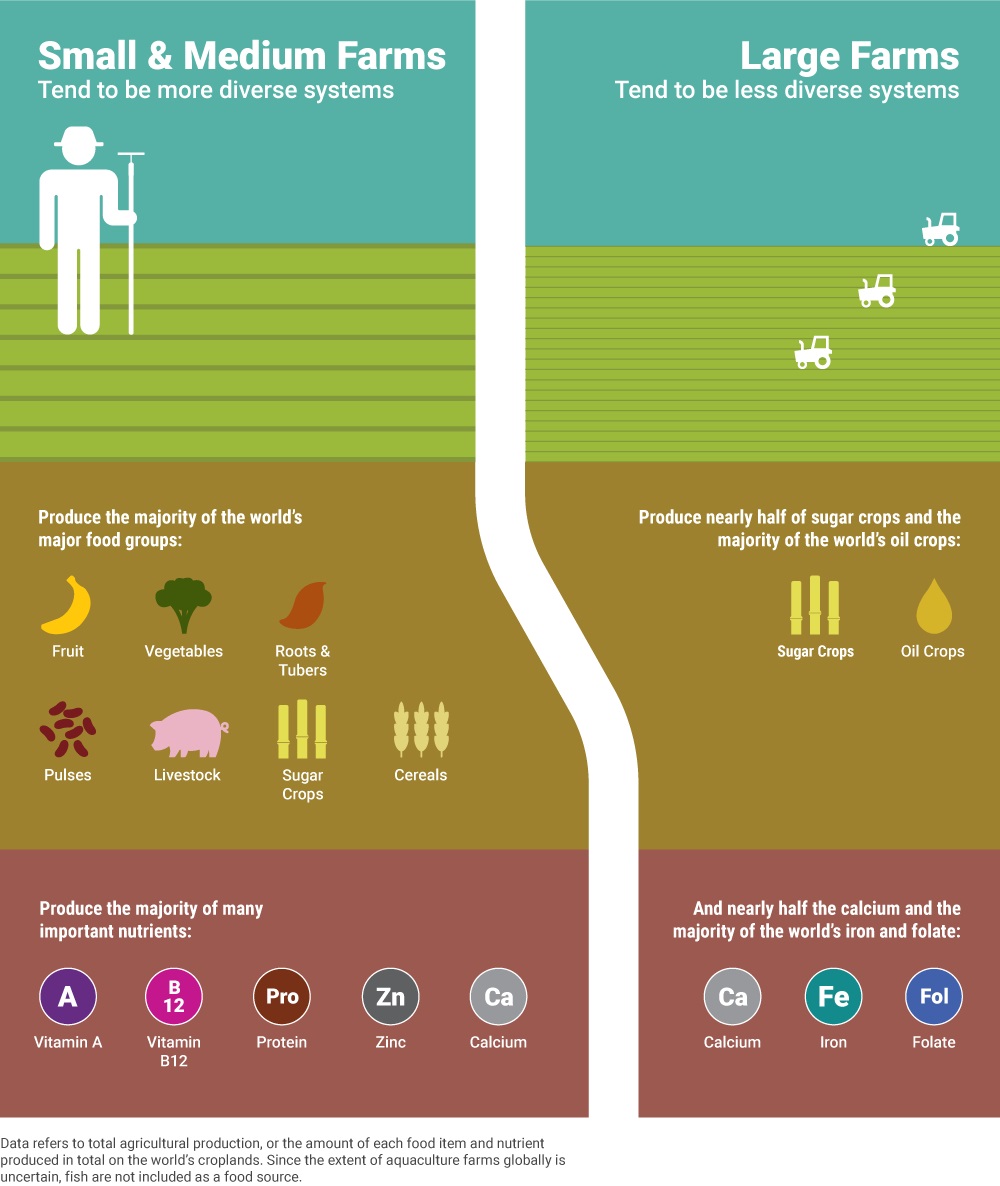Small Farms: Stewards of Global Nutrition?
Globally, small and medium farms of less than 50 hectares produce more than half (51-77 percent) of nearly all the foods and nutrients that are most central to our diet. This analysis is from a new article in the The Lancet Planetary Health and highlighted in a new Food Matters report from the Institute on the Environment at the University of Minnesota.

The new research article entitled “Farming and the geography of nutrient production for human use: a transdisciplinary analysis” presents a plausible breakdown of global agricultural and nutrient production by farm size and analyzes the associations between farm size, agricultural diversity, and nutrient production. What the authors show is that both small and large farms are critical for food security. The majority of global micronutrients (53–81 percent) and protein (57 percent) are produced in more diverse agricultural landscapes. Indeed, in many places, small farms are the critical provider of micronutrients for the food supply, especially for many of the world’s poorest and most vulnerable people.
A complementary Food Matters report highlights the results from the study using interactive data visualizations. The report provides an interactive breakdown of worldwide food and nutrient production by farm size and also global maps showing nutritional yields.
Check out the external pageFood Matters report herecall_made.
See the full article from external pageThe Lancet Planetary Health herecall_made.
The press release from the external pageUniversity of Minnesota can be found herecall_made.
Several of the authors of the study are part of the international consortium Delivering Food Security on Limited Land, and Food Matters features, multimedia primers on the sustainability of our global food system, also support the project. The World Food System Center leads the stakeholder engagement and knowledge exchange activities for the consortium.


